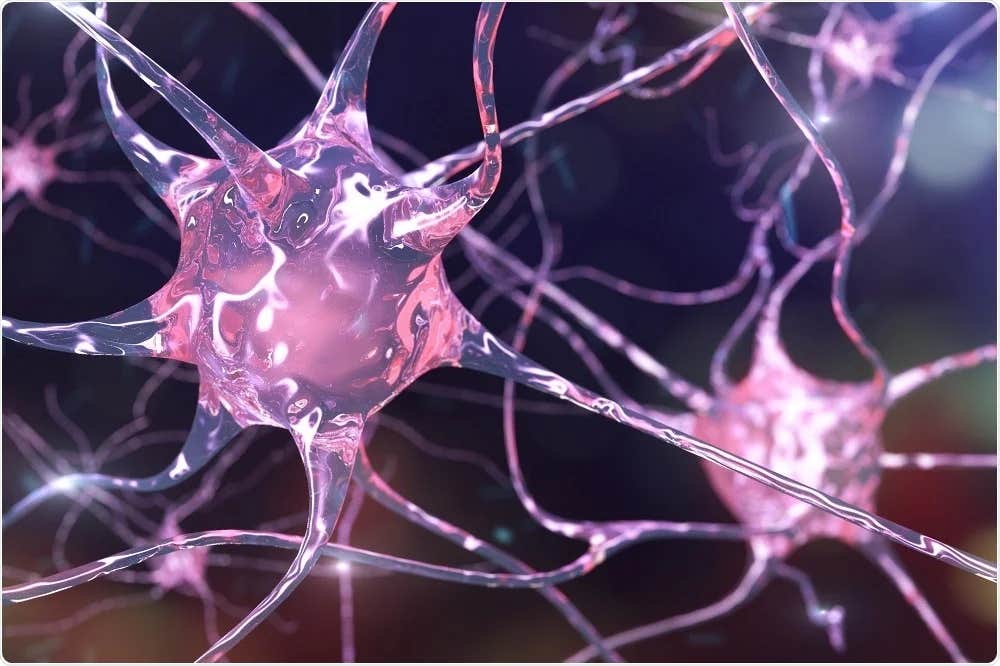Incredible new cell type has reshaped our understanding of the brain
Neuroscience stands on the precipice of a groundbreaking discovery that could reshape our understanding of the brain’s functionality.

[Sept. 7, 2023: Staff Writer, The Brighter Side of News]
Religiosity and spirituality could be mapped to specific brain circuits. (CREDIT: Getty Images)
Neuroscience stands on the precipice of a groundbreaking discovery that could reshape our understanding of the brain's functionality. Hidden within the intricacies of the brain's architecture, a hybrid cell, halfway between neurons and glial cells, has been unveiled, challenging the status quo.
Historically, it's been universally accepted that the brain operates chiefly due to neurons and their intricate networks that facilitate rapid information processing. In this complex orchestra, glial cells – the unsung heroes of the brain – ensure structural, energetic, and immune support while stabilizing physiological constants.
Notably, astrocytes, a subtype of glial cells, wrap themselves around synapses, where neurotransmitters connect and information is exchanged between neurons. Given their proximity to such crucial sites, neuroscientists have been intrigued by the potential active role of astrocytes in synaptic transmission and their involvement in the processing of information.
However, a fog of uncertainty clouded this hypothesis. The myriad studies aimed at proving this have yielded mixed results, making it difficult to draw a definitive conclusion. But all that changed when neuroscientists from the University of Lausanne (UNIL) and the Wyss Center for Bio and Neuroengineering in Geneva made a monumental breakthrough.
Related Stories
The Surprising Discovery
In an attempt to validate whether astrocytes indeed released neurotransmitters, researchers embarked on an exhaustive analysis of the molecular content of these cells.
Ludovic Telley, Assistant professor at UNIL and co-director of the study, remarked, "The precision allowed by single-cell transcriptomics approaches enabled us to demonstrate the presence in cells with astrocytic profile of transcripts of the vesicular proteins, VGLUT, in charge of filling neuronal vesicles specific for glutamate release."
These transcripts, identified both in mice and human cells, were accompanied by other specialized proteins, key for the function of glutamatergic vesicles and their rapid communication capabilities.
scRNA-seq and RNAscope HiPlex identification of a subpopulation of glutamatergic astrocytes in the mouse and human hippocampus. (CREDIT: Nature)
Having identified the molecular markers, the subsequent challenge was determining if these cells, in effect, released glutamate with a speed mirroring synaptic transmission. Andrea Volterra, honorary professor at UNIL and visiting faculty at the Wyss Center, noted, "We have identified a subgroup of astrocytes responding to selective stimulations with rapid glutamate release."
Furthermore, this released glutamate has a profound influence on synaptic transmission and the regulation of neuronal circuits. "They are cells that modulate neuronal activity, they control the level of communication and excitation of the neurons," said Roberta de Ceglia, the study's primary author.
Low-magnification dorsal hippocampus slice from mice expressing tdTomato under the GFAP promoter (red; Methods) showing immunohistochemistry staining for combined GS and S100β (green), and DAPI (white). (CREDIT: Nature)
Crucially, without this cellular mechanism, the study unveiled that the memory of mice suffered and the long-term potentiation, integral to memory mechanisms, was compromised.
Ramifications Beyond Memory
The ripple effects of this groundbreaking research extend into the realm of brain disorders. Disrupting these hybrid cells not only impacts memory but has potential ties with severe conditions like epilepsy, where its seizures were intensified. Furthermore, these astrocytes play a pivotal role in modulating brain circuits, offering promising therapeutic avenues for diseases like Parkinson's.
Characteristics of the distinct astrocyte transcriptional clusters and presence of cluster 7 glutamatergic astrocytes in all the hippocampal regions. (CREDIT: Nature)
With this groundbreaking discovery, Andrea Volterra envisions a brighter horizon in neuroscience, "In between neurons and astrocytes, we now have a new kind of cell at hand. Our next studies will explore the potential protective role of this type of cell against memory impairment in Alzheimer's disease."
In conclusion, this research, like a lighthouse, illuminates a previously shadowed area of neuroscience. The discovery of the hybrid cell not only redefines our understanding of the brain's intricate machinery but beckons a future ripe with potential research prospects and therapeutic breakthroughs.
For more science stories check out our New Discoveries section at The Brighter Side of News.
Note: Materials provided above by The Brighter Side of News. Content may be edited for style and length.
Like these kind of feel good stories? Get the Brighter Side of News' newsletter.
Joseph Shavit
Head Science News Writer | Communicating Innovation & Discovery
Based in Los Angeles, Joseph Shavit is an accomplished science journalist, head science news writer and co-founder at The Brighter Side of News, where he translates cutting-edge discoveries into compelling stories for a broad audience. With a strong background spanning science, business, product management, media leadership, and entrepreneurship, Joseph brings a unique perspective to science communication. His expertise allows him to uncover the intersection of technological advancements and market potential, shedding light on how groundbreaking research evolves into transformative products and industries.



